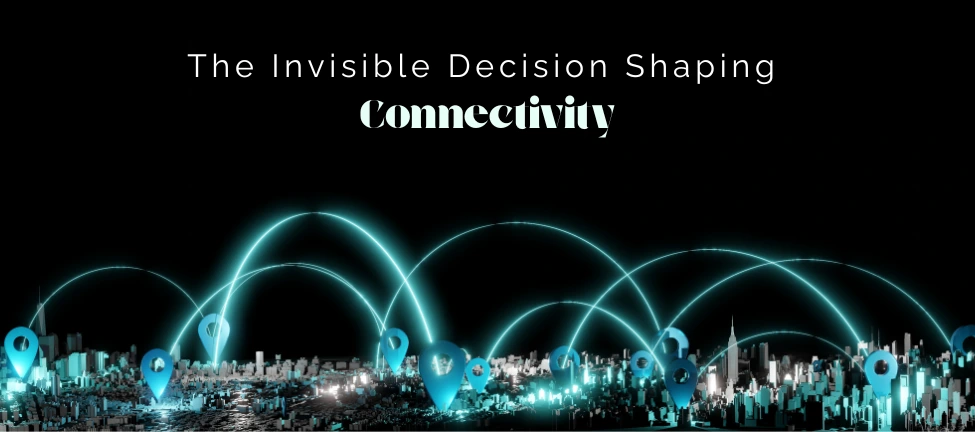Updated: Jan 28, 2025

Few decisions in IT infrastructure seem as mundane as selecting an Ethernet cable. Yet, as enterprises scale, as data demands grow, and as networks become more intricate, the wrong choice can prove costly. The cabling that sits behind walls and under floors often dictates whether a network can evolve smoothly or become a bottleneck that requires expensive retrofitting.
The debate between Cat6, Cat6A, and Cat7 is not merely a matter of incremental improvements. These categories represent different performance thresholds, each with implications for speed, interference, and long-term scalability. The differences are technical, but the stakes are financial. Choosing wisely can save an organisation millions in infrastructure costs over time, while the wrong choice may lead to early obsolescence.
Enterprises often aim for what they call "future-proof" infrastructure. The idea is simple: install the highest-performing cable today to avoid costly upgrades later. In reality, the calculation is more nuanced. A small business with moderate data needs does not require the same cabling as a hyperscale data center. The balance between cost and performance must be tailored to operational requirements rather than guided by marketing hype.
Moreover, network speeds are only as fast as their weakest link. Investing in high-end cabling while relying on outdated switches or routers offers little benefit. Structured cabling is a system, not a standalone component. Each element must work in concert to deliver optimal performance.
Cat6, or Category 6, is the most widely used Ethernet cabling in business environments today. Introduced as an improvement over Cat5e, it offers higher bandwidth and reduced crosstalk, making it a practical choice for offices, retail spaces, and campus networks.
The appeal of Cat6 lies in its balance of affordability and capability. For organisations that do not require ultra-high speeds or extensive data transfers, it remains the most cost-effective option. However, as businesses integrate higher-bandwidth applications such as 4K video streaming, AI workloads, and cloud computing, Cat6 may begin to show its limits.
Cat6A (Augmented) is not merely a minor upgrade—it represents a significant leap in capability. Designed for more demanding environments, it enhances both speed and reliability.
For enterprises looking at long-term scalability, Cat6A is a compelling choice. It ensures that infrastructure investments remain relevant even as data consumption rises. However, the trade-off is cost. Cat6A is bulkier, harder to install, and more expensive than Cat6, often requiring additional space for cable management.
Cat7 was designed with an eye toward next-generation networking, but it remains an outlier in practical deployment. While it offers impressive specifications, its advantages are often unnecessary outside niche applications.
Despite its technical superiority, Cat7 has failed to gain widespread adoption. One reason is its proprietary nature—unlike Cat6 and Cat6A, Cat7 does not conform to ANSI/TIA-568 standards, leading to compatibility issues. Furthermore, the additional shielding makes installation cumbersome, and for most enterprise settings, Cat6A delivers nearly identical performance at a lower cost.
Choosing between Cat6, Cat6A, and Cat7 is less about raw specifications and more about aligning with an organisation’s operational needs. A practical decision must factor in:
Some organisations choose to install lower-category cabling with the assumption that upgrading later will be simple. This is a miscalculation. Cabling is not a modular component like a server or switch—it is deeply embedded in the physical structure of a building. Retrofitting requires tearing up walls, rewiring entire floors, and disrupting operations. The cost of replacing structured cabling often exceeds the initial cost of simply installing higher-grade cables in the first place.
For those planning beyond the next decade, Cat8 is beginning to enter the conversation. Designed for data centers and high-performance computing environments, Cat8 supports speeds of up to 40 Gbps at distances up to 30 meters. However, its relevance for general enterprise networks remains limited. The transition to fiber optics may prove a more viable alternative for future scalability.
Choosing between Cat6, Cat6A, and Cat7 is not a matter of selecting the highest number. It is about finding the right balance between performance, cost, and future readiness. In most enterprise settings, Cat6A offers the best trade-off between speed and longevity. Cat7 remains niche, and while Cat6 is adequate for many networks today, its limitations will become evident as data demands grow.
Enterprises planning structured cabling upgrades must think beyond immediate needs. The cables installed today will determine network performance for the next decade. Making the right choice now ensures an organisation is not locked into an outdated infrastructure before its lifecycle has even begun.
Structured cabling decisions are not just about today—they shape the next decade of your network’s performance, reliability, and scalability. The wrong choice can lead to unnecessary bottlenecks, costly retrofits, and lost productivity. The right choice ensures seamless operations, high-speed connectivity, and long-term business resilience.
At Proactive Data Systems, we don’t just install cables—we engineer scalable, high-performance structured cabling solutions designed for enterprise campuses, data centers, and high-density environments. With 34 years of expertise, we help businesses make the right investment in future-ready networking.
Don’t wait for performance issues to force an upgrade. Build your network right from the start. Get in touch with Proactive’s experts today. Write to [email protected] to schedule an expert consultation.